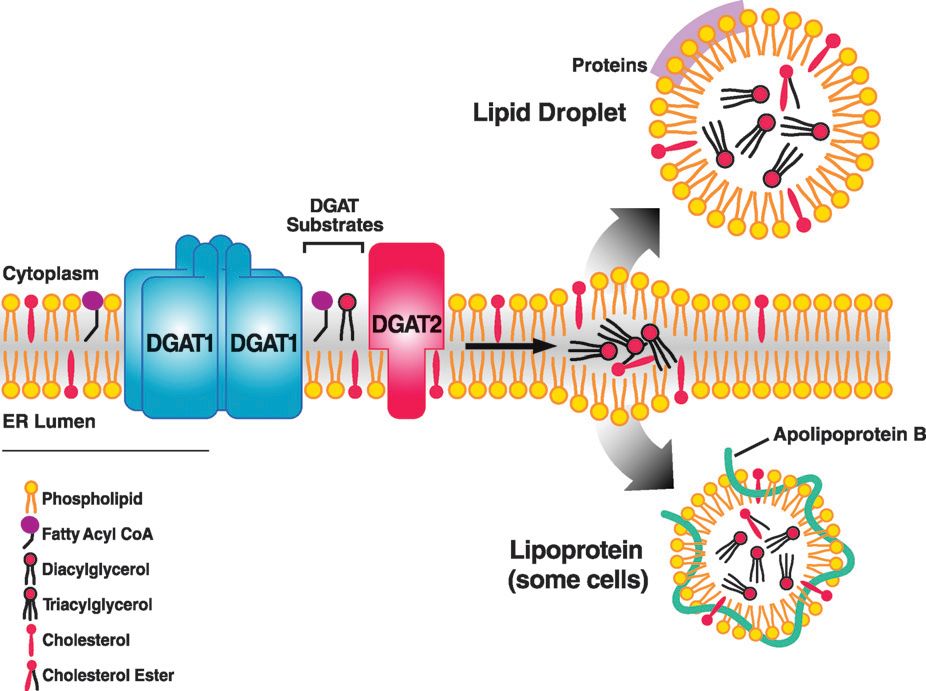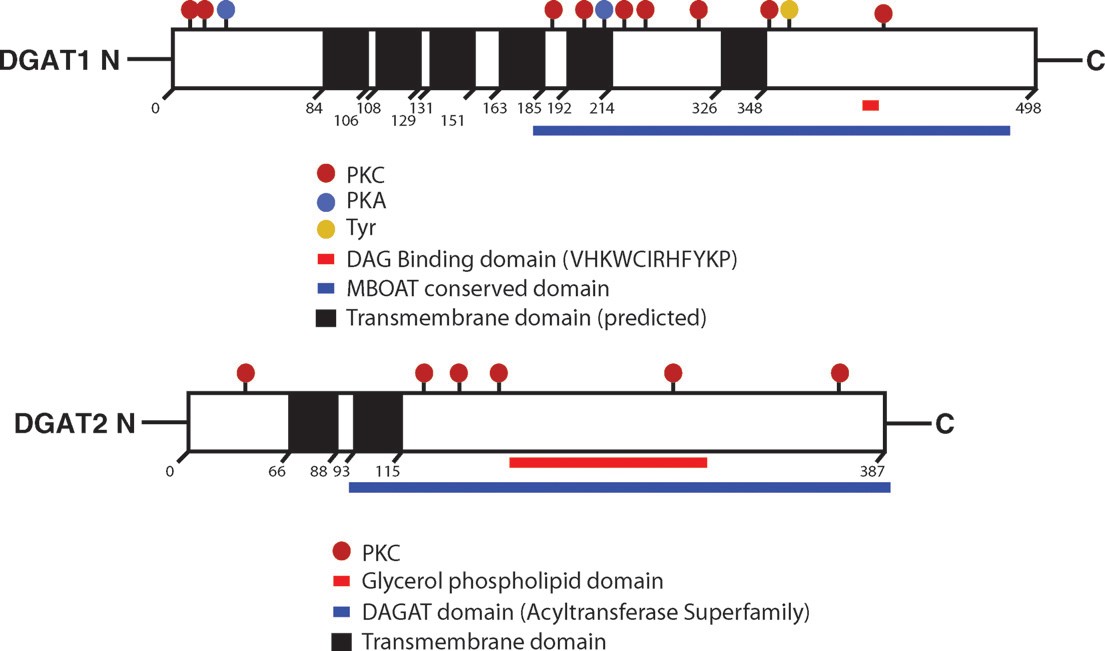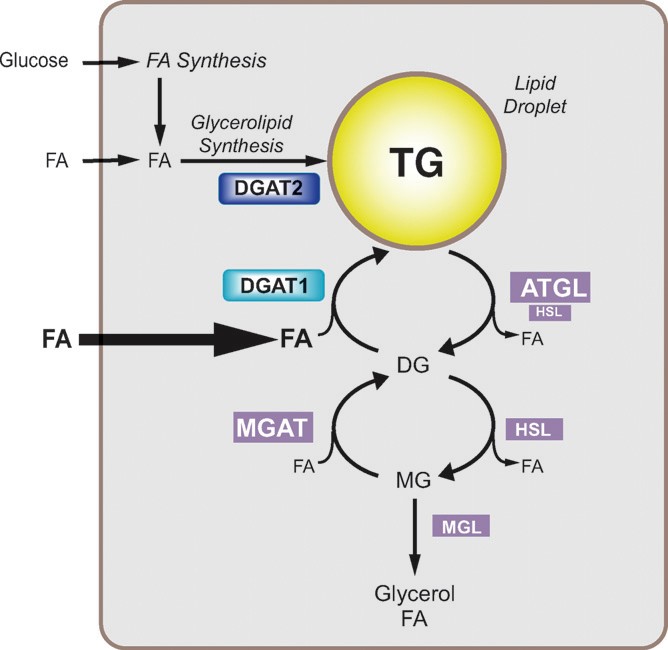Triglycerides, as crucial molecules in lipid metabolism, play significant roles in energy storage, membrane lipid synthesis, among others. Creative Biolabs endeavors to provide comprehensive triglyceride-related services, integrating relevant knowledge from the field of stem cell therapy to deliver efficient and accurate solutions, facilitating an in-depth understanding of its functions and mechanisms in disease processes.

Triglycerides, widely present in nature, constitute one of the primary forms of energy storage in animals and humans, also serving as essential lipid components in blood lipids.
Triglycerides possess a simple structure, comprising glycerol linked to three fatty acid molecules via ester bonds. In vivo, triglyceride synthesis is a complex process, with a crucial step catalyzed by acyl-CoA: diacylglycerol acyltransferase (DGAT) enzymes. DGAT enzymes, extensively expressed within cells, are predominantly concentrated in tissues associated with triglyceride metabolism, such as adipose tissue, liver, and intestines.
DGAT enzymes are pivotal in the triglyceride synthesis pathway, catalyzing the formation of triglycerides by the condensation of glycerol and fatty acids. Known pathways of triglyceride synthesis involve DGAT enzymes catalyzing the final step, connecting sn-1,2-diacylglycerol with fatty acyl-CoA to form triacylglycerol or triglyceride, typically within the endoplasmic reticulum.
Currently, two common DGAT enzymes have been identified, namely DGAT1 and DGAT2. These enzymes exhibit differential expression levels across various tissues and possess distinct protein sequences, with data suggesting that DGAT2 exhibits higher substrate affinity compared to DGAT1.
 Fig.2 DGAT enzyme catalyzes the synthesis of triacylglycerol.1
Fig.2 DGAT enzyme catalyzes the synthesis of triacylglycerol.1
Triglycerides serve multiple crucial functions in the human body:

While triglycerides play essential roles in normal physiological functions, their excessive accumulation can lead to the occurrence and progression of various diseases.
In obesity, the storage capacity of triglycerides in adipocytes may be overwhelmed, leading to dysfunction of adipocytes and adipose tissue, and the accumulation of excess lipids in non-adipose tissues may result in tissue dysfunction termed lipotoxicity, further promoting conditions such as hepatic steatosis and type 2 diabetes.
Acne, a chronic inflammatory disease affecting the skin follicles, involves factors such as sebum secretion, abnormal follicular keratinization, and bacterial infection. Research indicates an increased level of triglycerides in surface lipids of acne patients, possibly correlating with the onset and progression of acne.

As a leader in biotechnology, Creative Biolabs offers a range of professional services to facilitate in-depth research on the physiological synthesis/breakdown of triglycerides and their roles in disease occurrence and development. Leveraging cutting-edge biological research platforms, we provide efficient and accurate triglyceride and DGAT enzyme-related research services. Additionally, we possess the capability to integrate novel stem cell therapy platforms, providing reliable support for your disease model research and the development of potential disease management strategies.
Please do not hesitate to contact us for robust support.
Reference
For Research Use Only. Not For Clinical Use.